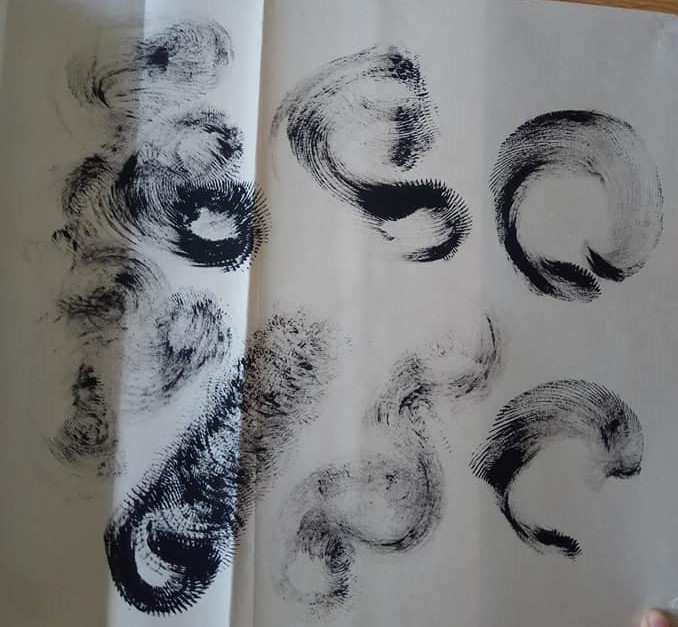I had a lot of fun trying out new things in this project.
Earlier on, I experimented with fire…
However I realised that I could not control the fire.
I also tried to do something with fabrics and fibers…
However, I struggled with making the materials less 3D. As a result, I decided to concentrate on using just ink and Chinese ink.
I tried lino printing (linography) from a lino pad…
However, I did not really like the process of craving on the lino pad and then transferring it onto the paper. I also lacked the confidence to be proficient in this technique within the timeline of the assignment.
Thus I tried different ways to work with the lino pad…
I used my fingers to scribble Chinese characters in a very fast and carefree way. I did it through a paper placed over a loaded lino pad, this inverted the characters and also resulted in other imprints on the paper.
I also tried stamping and printing with different materials. One of the more interesting things I tried was to use a netted new year decoration to stamp the paper differently.

I really enjoyed the texture this material could produce. It also reminded me of the works of Chinese painter, Simon Wee.

Simon Wee, Balance, Acrylic on Canvas, 122 x 152 cm
I also tried printing with crumpled paper, including textured tissue paper and newspress.
Due to my previous interest in fabrics, I also experimented with printing with lace.
However, while the process of trying to figure out how to print lace was fun, I did not find the effect particularly meaningful.
While doing these and washing the lino pad, I realised I really liked the patterns formed on the pad as it is washed. It also intrigued me that this brings across the idea of ephemeral moments.
I also experimented with washing a loaded paper and smudging.
I also played around with Indian Ink and salt…
I really liked the last effect, which was achieved by staining the paper with wet tissue that is loaded with ink.
In the end, I settled with these six techniques and materials for my final work. I wanted to present the spectrum of emotions through a relationship: infatuation- apprehension- bliss- astonishment- disgust- disappointment.























